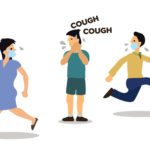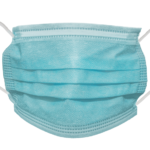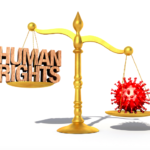COVID Update: The Latest Public Health Order in New South Wales

Here we go again. Greater Sydney is in lockdown, there are new rules for regional areas, and plenty of New South Wales residents are prepared to inform on their neighbours as Covid-19 case numbers rise.
It’s a situation that’s constantly changing, and can be hard to keep up with.
Currently, the Greater Sydney region is in a state of lockdown. This region includes the Blue Mountains, Central Coast and Wollongong.
The lockdown is pursuant to The NSW Minister for Health, Brad Hazzard, latest Public Health Order which is known as the Public Health (COVID-19 Greater Sydney) Order (No 2) Amendment Order 2021.
The order is issued under section 7 of the Public Health Act and will be in place until at least 9 July 2020.
Lack of optimism
At this stage, the New South Wales Premier, Gladys Berejiklian is not being optimistic about restrictions easing at that time, suggesting that if the current spike in Covid cases doesn’t ease, restrictions could be tightened, particularly considering how contagious the Delta strain of the virus is.
Public Health Orders in NSW
The Public Health Act 2010 empowers state officials to make a range of enforceable directions and orders with a view to dealing with public health risks, and provides that where the health minister considers on reasonable grounds that a situation has arisen that is, or is likely to be, a risk to public health, the minister may take such action or give such directions that are necessary to deal with the risk and its possible consequences.
The section makes clear that actions and orders can be made in order to:
- Reduce or remove any risk,
- Segregate or isolate inhabitants, and/or
- Prevent, or conditionally permit, access to areas.
The Act requires these orders to be published as soon as possible and communicated to the wider public.
Stay at home orders for Greater Sydney
Essentially, there are only four reasons for residents in the Greater Sydney Region to leave home, including: shopping for food or other essential goods and services; medical care or compassionate needs including getting vaccinated; exercise outdoors and essential work or education, where you cannot work or study at home.
At this stage, no curfew has been implemented.
Other rules include:
- No more than five visitors to any household including children,
- People must wear masks in public settings,
- People must wear masks at work,
- Hospitality venues will remain open but there is no standing,
- No singing or dancing at any venues except for weddings,
- No more than 20 people on the dance floor at a wedding,
- One person per four square metres, which will affect numbers at funerals and weddings,
- A recommendation of 50 per cent capacity at sports stadiums and venues,
- People must wear masks at stadiums,
- Gym classes limited to 20 but you must wear a mask, and
- Green dot seating plan is back in effect on public transport.
Residents of these areas have been banned from entering Queensland, New Zealand, South Australia, Western Australia and Victoria.
Regional New South Wales
In regional areas, people are not under ‘stay at home orders’ but no more than five visitors are allowed at home. Non-essential businesses in these areas (for example hairdressers and beauticians have been closed). Masks are mandatory everywhere indoors, such as shopping centres and the gym. Masks are also mandatory on public transport.
In Regional areas masks are also mandatory and the maximum 5 people rule applies to having visitors in the home. Ticketed events must run at 50% capacity in these areas. While the restrictions are frustrating, for most the blow will come from not having the usual high volume of Sydney visitors over the school holidays which many small towns, particularly on the Eastern Coast, rely upon.
Anyone who has been in Sydney since the 21st of June, must self-isolate for two weeks.
There have been 130 locally acquired cases reported since June 16, when the first case of the Bondi cluster — a limousine driver who transported international flight crew –was reported.
Police are choosing enforcement over cautions
Despite the widespread community criticism, NSW Police Commissioner Mick Fuller has warned that police officers are now working under a “compliance and enforcement regime” which means they are not wasting time with warnings and will issue fines to people flaunting public health orders.
Most of the 44 fines issued over the weekend were given to people failing to wear a mask, but two people on the South Coast of Sydney who got lost in the national park and had to be rescued by SES volunteers were fined $1,000.
And there are reports of people willing to inform on anyone not abiding by the rules via the CrimeStoppers hotline. A family who traveled more than three hours to attend a pony event in the Hunter Valley were caught after a tipoff to police and fined for not staying within the metropolitan area. They were also fined for not wearing masks.
Police have warned that they will be using additional manpower to increase patrols, along with mobile technology to run checks on people, their vehicles, and will make inquiries where necessary. Highway patrols will be on the alert, and popular holiday destinations will also be monitored.
The offence of failing to comply with a public health order in NSW
Section 10 of the Public Health Act provides that a person who, without reasonable excuse, fails to comply with such a public health direction faces a maximum penalty of 6 months in prison and/or a fine of 100 penalty units, which is currently $11,000.
Any continued failure to comply is punishable by a fine of 50 penalty units, or $5,500, for each day the offence continues.
The maximum penalty for companies is 500 penalty units, or $55,000, and 250 penalty units, or $27,500 for each day the offence continues.
Police are also empowered to issue criminal infringement notices of $1000 to individuals and $5000 to businesses. Receiving these ‘on-the-spot’ fines does not result in a criminal record, and the recipient can elect to take the matter to court. However, if the offence is ultimately proved in court, the maximum penalties outlined above come into play and a finding of guilt will lead to a criminal record, unless you (or your lawyer on your behalf) can persuade the court to grant a ‘section 10 dismissal’ or a conditional release order without a conviction.








